|
Advertisement / Annons: |
1914 years Solar eclipse |
| Object : | Sun / Moon |
| Object size : | 0.5 degree |
| Object magnitude : | - |
| More to know : |
Wikipedia: https://en.wikipedia.org/ wiki/ Sun NASA Eclipse 1914 path: https://eclipse.gsfc.nasa.gov/ SEplot/ SEplot1901/ SE1914Aug21T.GIF |
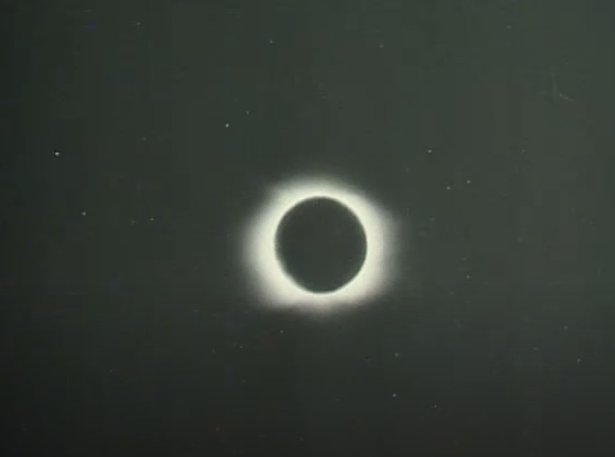 Screen dump from a Swedish documentary film from 1914, credit Filmarkivet
Screen dump from a Swedish documentary film from 1914, credit Filmarkivet |
| Object : | Sun and Moon |
| Date : | 1914, 21 August |
| Time (UT) : | 11:00 to 12:20, Sweden + 1 hour |
| Lens/telescope : | A 35 mm normal lens for landscape and city, a 150 mm telephoto lens for solar eclipse in Stockholm and a 300 mm for solar eclipse in Sollefteå. Rough estimates. |
| Film/CCD : | 35 mm, 1.33:1, frame 18x24 mm, 18fps |
| Site : | Sweden, Sollefteå and Stockholm |
| Comment : | Solar Eclipses in Sweden are not common. There was one in 1914 and I have found an old documentary film from that occasion. The Solar eclipse was recorded at two places, Sollefteå and Stockholm. The part of the film from Stockholm they have done some mix between two different films, background and solar eclipse, which doesn't looks very good, but still it's a document of an old solar eclipse. Something that we are very happy to have today. |
|
Have a look at the documentary film here: Filmarkivet: Solförmörkelse 1914 and follow my comments below. I have also included a simulation from the program CdC (Skychart) how it looks and at what time they correspond to each other. This is a free software that you can download and do your own simulations. Solar eclipse path: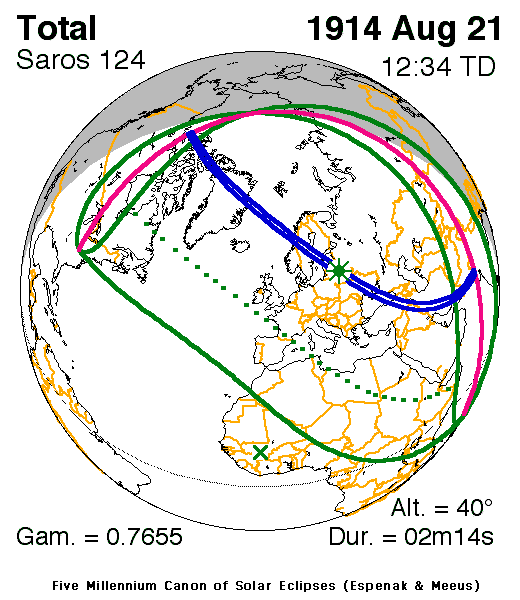 Credit:
NASA
Credit:
NASAFrom NASA's Solar Eclipse Search Engine it's possible to find older solar eclipse data. From that I also got this map and data. It's the Saros 124 eclipse. Complementary material: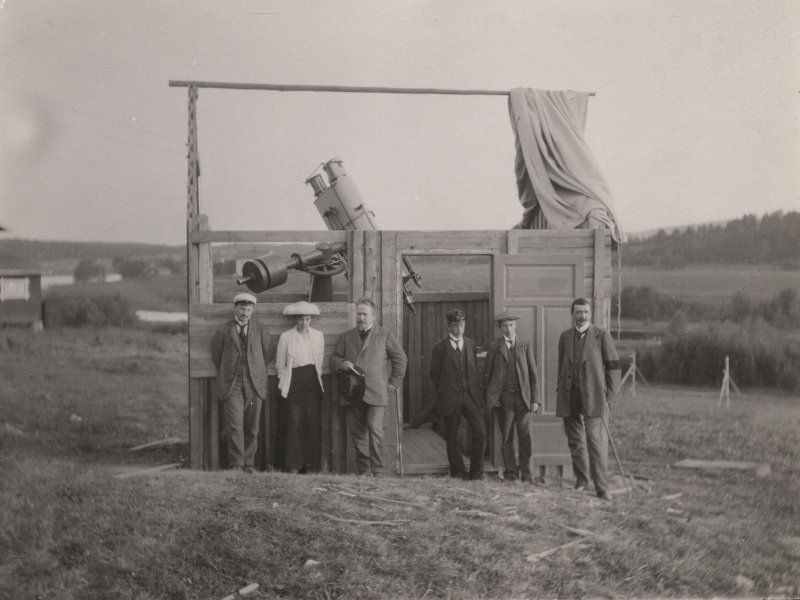 Credit:
Wikimedia
Credit:
WikimediaVetenskapsakademiens solförmörkelseexpedition 1914 i Forse utanför Sollefteå Medlemmar i Vetenskapsakademiens solförmörkelseexpedition till Forse (nuvarande Sollefteå kommun) i Ångermland 1914 stående framför den tillfälliga byggnaden för observationsinstrumentet. Från vänster: Knut Lundmark, Andrea Lindstedt, Östen Bergstrand, två okända män och Nils Tamm. Photographer: Unknown The solar research team from Uppsala, in this photo the impressive telescope that was used to take photos of the solar eclipse can be seen in background. The name Knut Lundmark, Östen Bergstrand and Nils Tamm are familiar from other documents I have found about astronomy. I haven't found any photos from this triple refractor, I think it are recorded on glass plates. Maybe they also connected the film camera with its own lens to this telescope. This is a heavy fragile telescope and could not have been so easy to transport it from Uppsala to Sollefteå and back. Today you find this telescope in Uppsala Observatory park that I visited not long time ago: Uppsala Observatorie park. 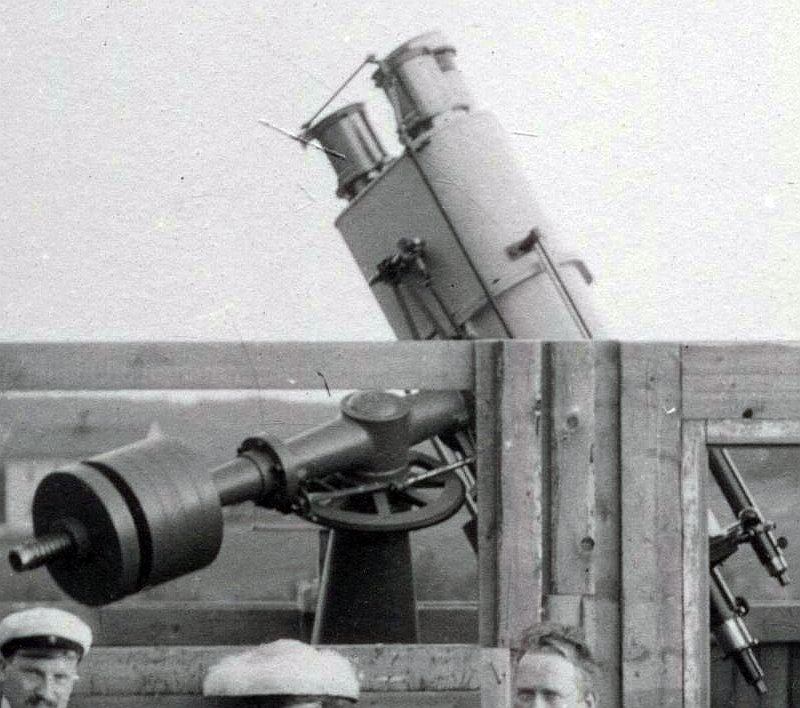 Credit:
Wikimedia
Credit:
WikimediaPhotographer: Unknown A close up and cropped part of the photo above show more of the details of the telescope. In the film there is no view of this telescope. It's another telescope we see in the film, a telescope only for visual use.
Christoffer: Long time ago I read about an instrument with three refractors, it was two 15 cm and 1500 mm focal length for photographic use and one visual refractor with 16 cm lens and 1600 mm focal length. It must be this telescope, I hope to find more information about it later. Information about Knut Lundmark and his Sun eclipse travels: Knut Lundmark Solförmörkelseresor |
Solar eclipse film at Sollefteå in Northern Sweden. Supervised by Doctor N.V.E. Nordenmark
Sollefteå 1914-08-21 12:05:00 CET 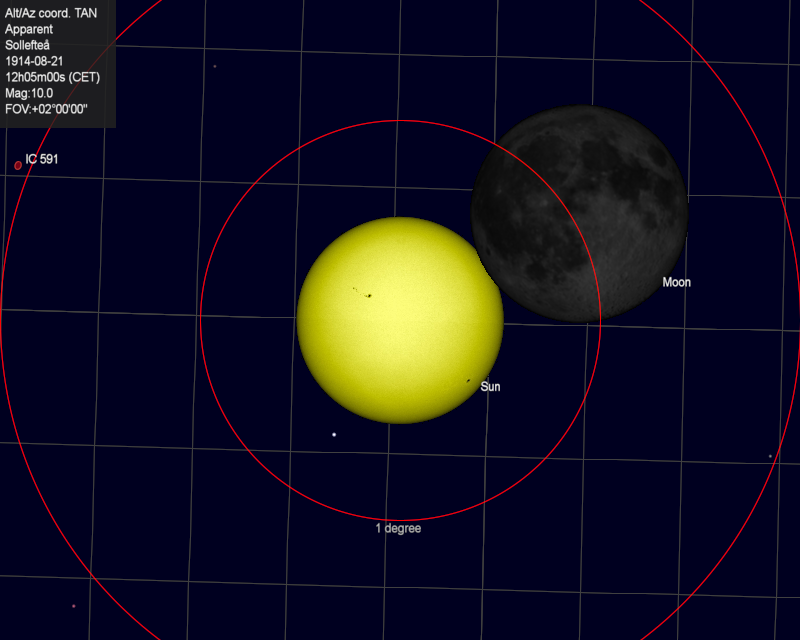
The move starts at 12:03:15 local time when the Moon start to obscure the Sun, at 00:58 in the film the Moon and Sun looks like this in the simulation. The Moon is dark and touch the Sun's disc at the up and right side. Sollefteå 1914-08-21 12:19:00 CET 
At 01:32 in the film the Moon is clearly visible. Sollefteå 1914-08-21 12:32:00 CET 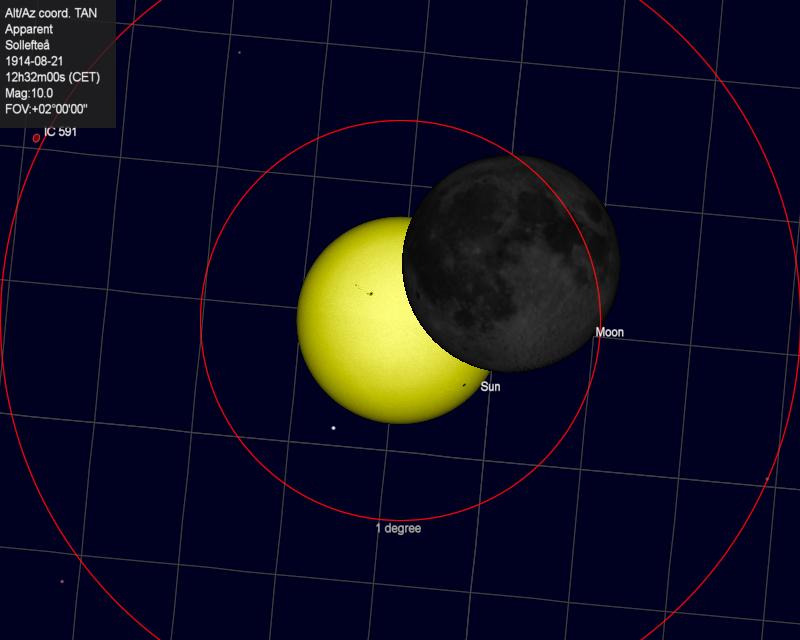
At 01:40 in the film the Moon's edge is almost at center of the Sun. There are stars in the surrounding of the Sun, but can't see any of them on the film. Not so strange because of the brightness of the Sun. Sollefteå 1914-08-21 12:50:00 CET 
At 01:50 in the film the Moon cover more than 50% of the Sun. Sollefteå 1914-08-21 13:08:00 CET 
At 02:20 in the film, 13:08:00 local time, just before the total eclipse begins. Sollefteå 1914-08-21 13:12:00 CET 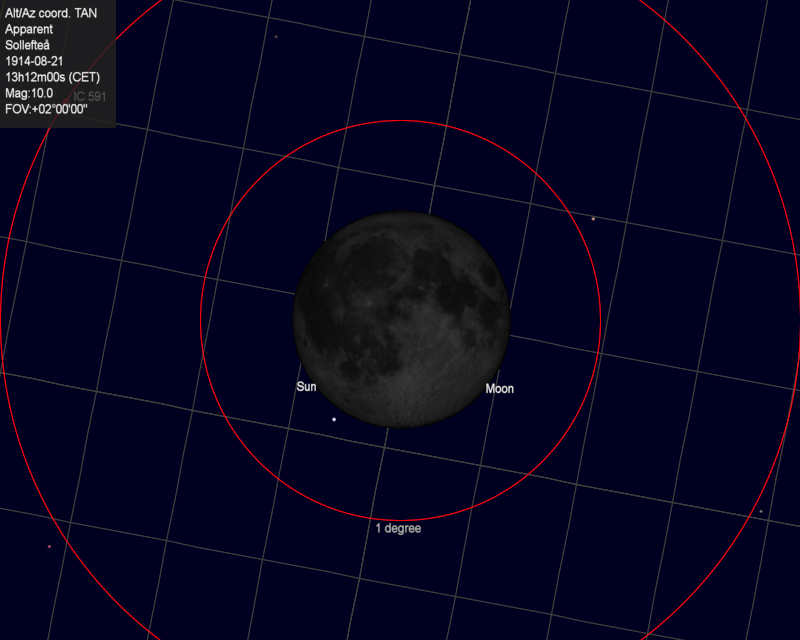
At local time 13:12:00 it's the total eclipse, at 02:58 in the film. The Moon cover the whole Sun's disc. The Moon's angle size is almost the same as the Sun's. But they are of very different sizes, the Sun is 400 times bigger but also 400 times more far away. That's why they looks to be of the same size. Sollefteå 1914-08-21 13:16:00 CET 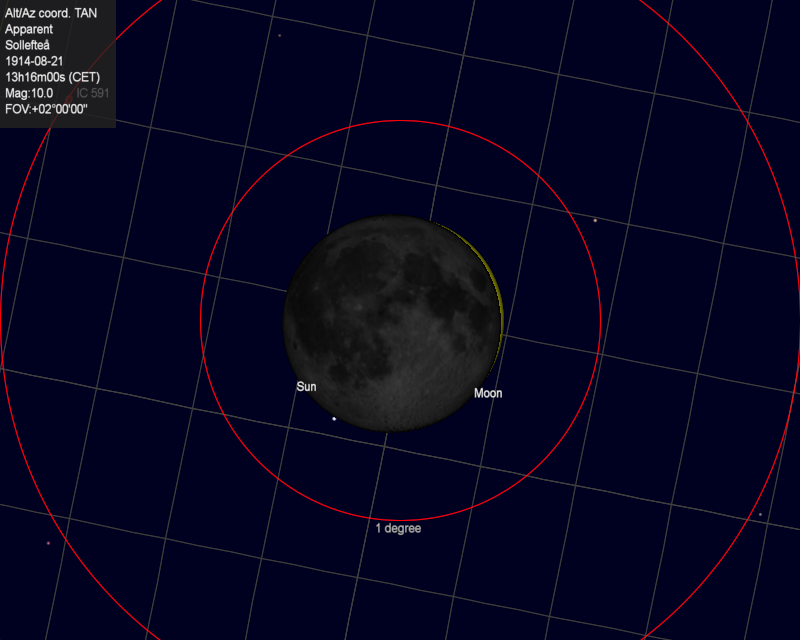
At 03:28 in the film the total part of the eclipse is over and a small arc of the Sun's edge is visible. The total eclipse lasted about two minutes. Sollefteå 1914-08-21 13:30:00 CET 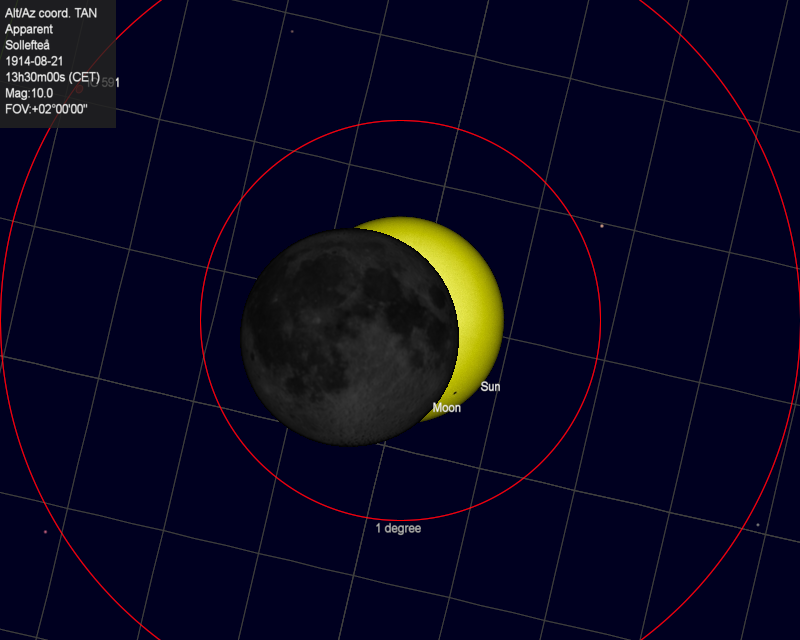
At 03:41 in the film, still the Moon cover more than 50% of the Sun, 18 minutes after the total eclipse. Sollefteå 1914-08-21 13:45:00 CET 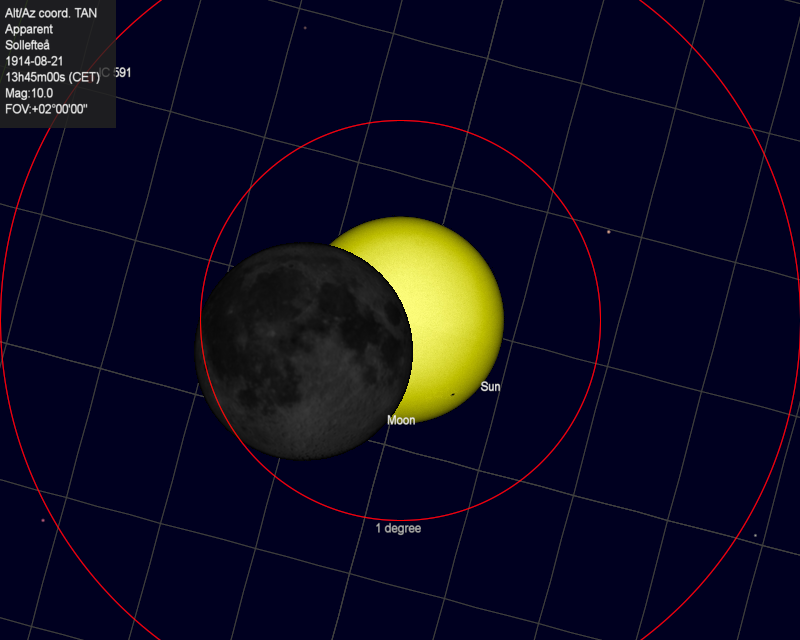
At 04:05, not many minutes left of the eclipse. Sollefteå 1914-08-21 14:18:00 CET 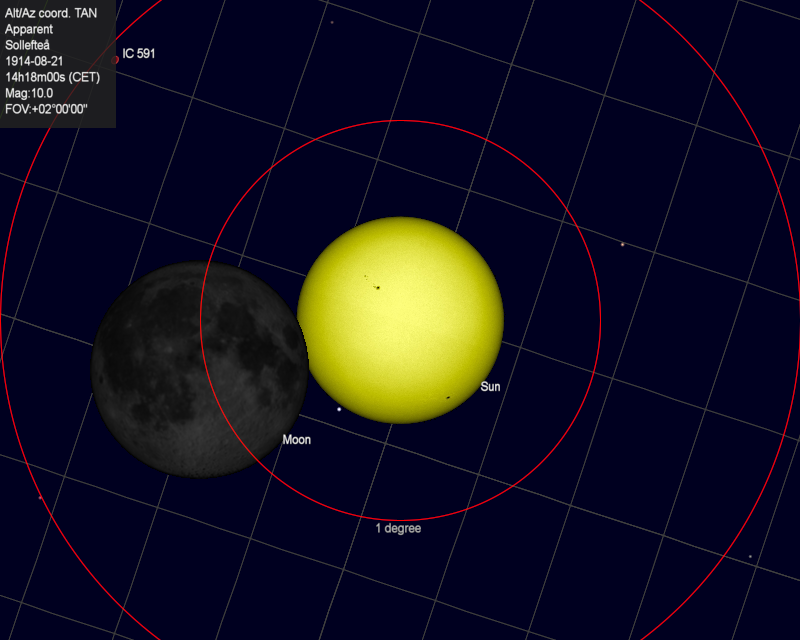
At 04:23 in the film, local time 14:18:00 the eclipse is over and the edge of the Moon leave the Sun's disk. I got the same local time that's indicated in the film. It's now 2 hours and 15 minutes since the Moon started to cover the Sun. The astronomer who super vised the solar eclipse, Nils Nordenmark was born 1867 at Hammerdal in Northern Sweden. He was also involved in the plans for the new observatory in Saltsjöbaden. He is also mentioned in my translation of Östen Bergtstrand's article Astronomical Observatories in Sweden, see page 9. More to read about Nils Nordenmark at Wikipedia. |
Solar eclipse film at Stockholm in Sweden, unknown photographer.
Stockholm 1914-08-21 12:15:00 CET 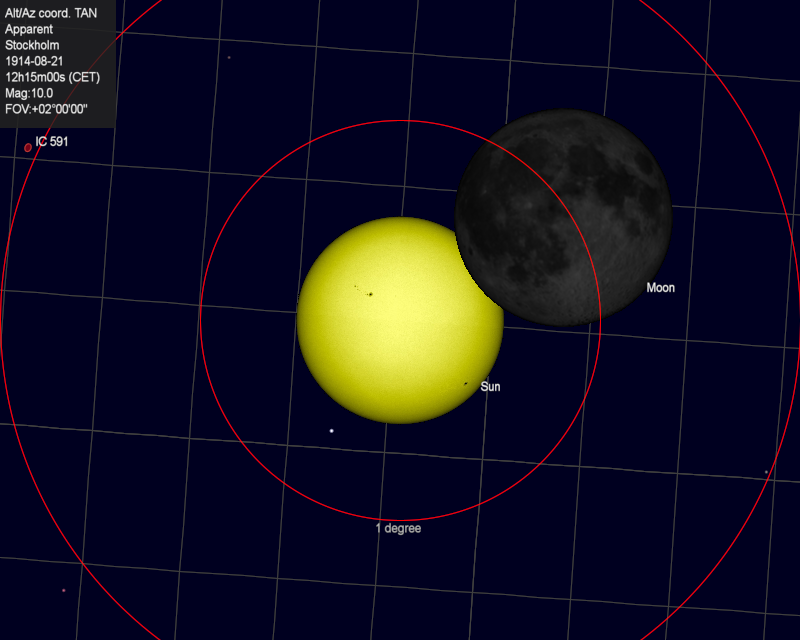
At 05:12 in the film, the diameter of the Sun on the film, estimated at 1.5 mm, has then been based on the fact that it is also 35 mm film with the format 18x24 mm. It is half compared to the film from Sollefteå, should then have been filmed with a telephoto lens of about 150 mm focal length. The film is overexposed and the sunspot cannot be seen here. The sunspots on the simulation doesn't have anything to do with them from 1914. Stockholm 1914-08-21 12:27:00 CET 
At 05:24 in the film, filmed from Strömbron.
The castle on the left with the tower of the Great Church rising up behind.
On the right, the old Riksdag house.
If it is filmed with 35 mm film, the lens should have a normal focal length, approx. 35 mm.
On the Sollefteå film, the time is given as 12:20 when the solar eclipse has lasted a little longer than here.
The distance between Sollefteå and Stockholm is 500 km.
The Sun is near the Southern direction.
You can clearly see how the Sun "vibrates" and moves relative to its surroundings.
It's a mix of two films taken with different focal lengths. Stockholm 1914-08-21 12:40:00 CET 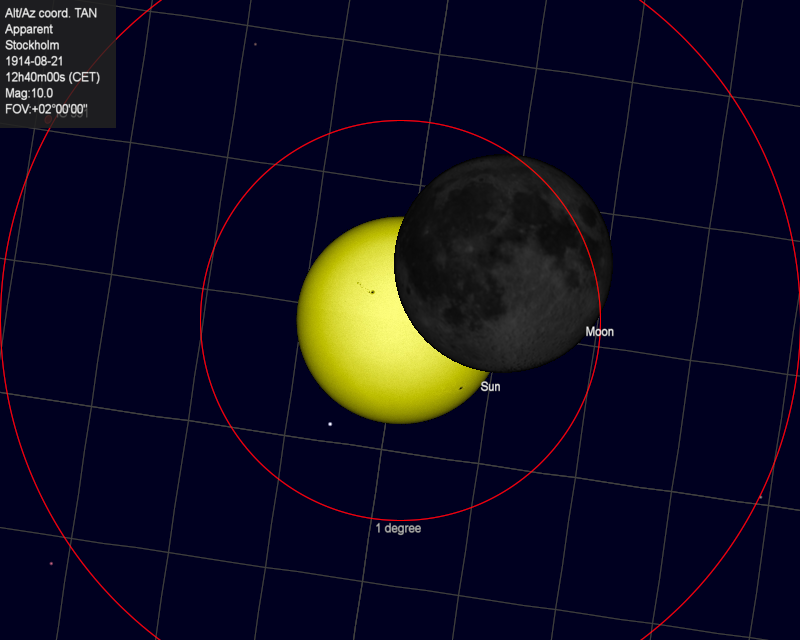
At 05:35 in the film, the solar eclipse is slightly more advanced.
Seems to have been taken from the streets Strömbron / Strömgatan, near Gustav Adolfs Torg.
The Sun is a mix between two films here as well and enlarged or taken with a longer focal length. Stockholm 1914-08-21 12:59:00 CET 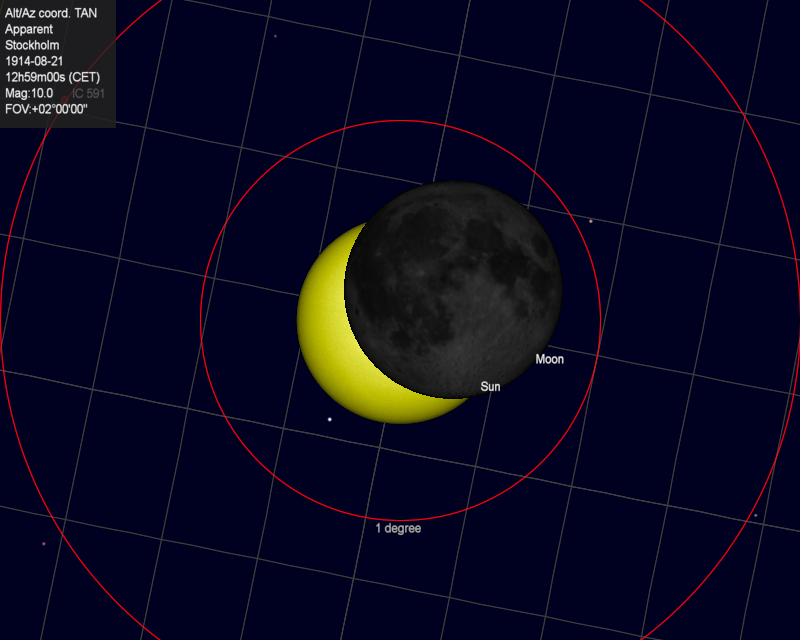
At 05:49 in the film, film of the solar eclipse, if you compare with the Sollefteå film, the time should be just before 12:50. It's 12:59:00 in the simulation above. Stockholm 1914-08-21 13:10:00 CET 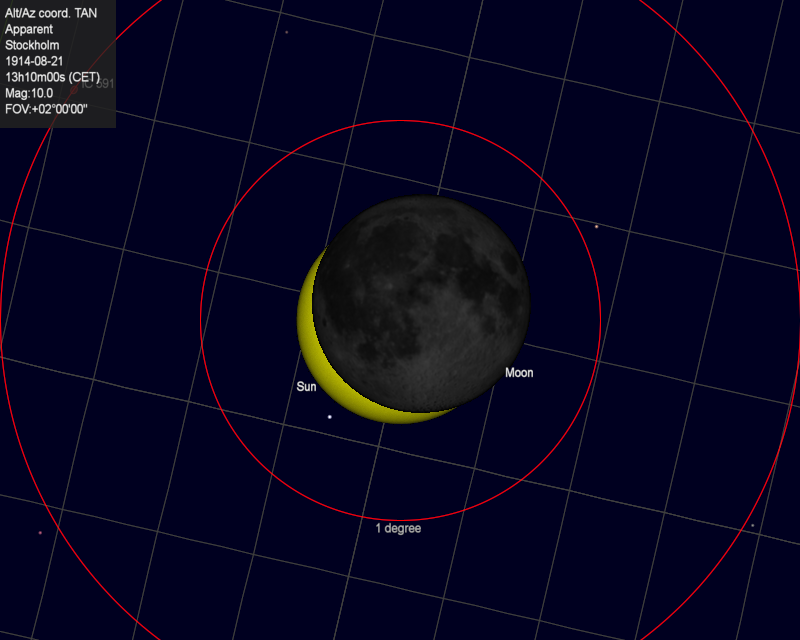
At 05:57 in the film, again a mix of the solar eclipse and the city, the Old Parliament House in the background.
It's at 13:10:10 local time and now it's not far from the eclipse's totality. Stockholm 1914-08-21 13:12:00 CET 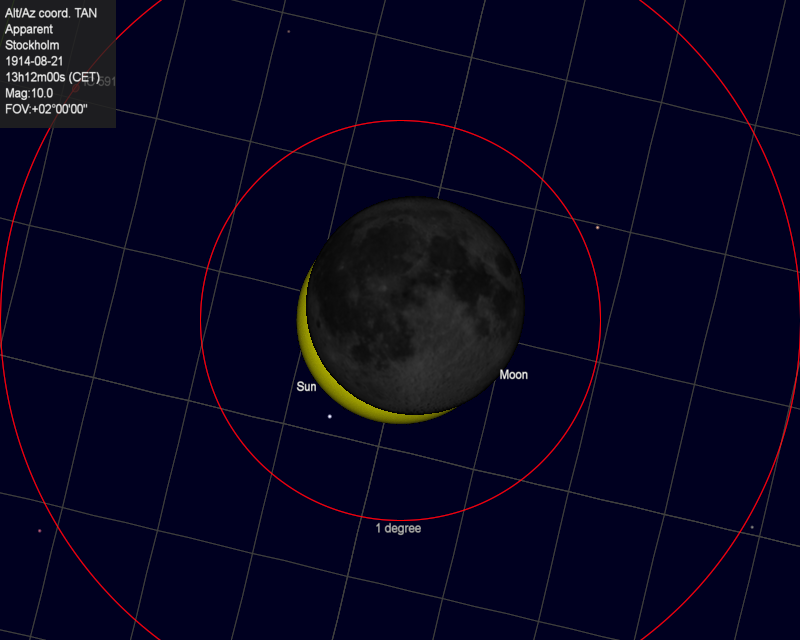
At 06:16 in the film, 7 minutes until the total eclipse occur. Stockholm 1914-08-21 13:19:00 CET 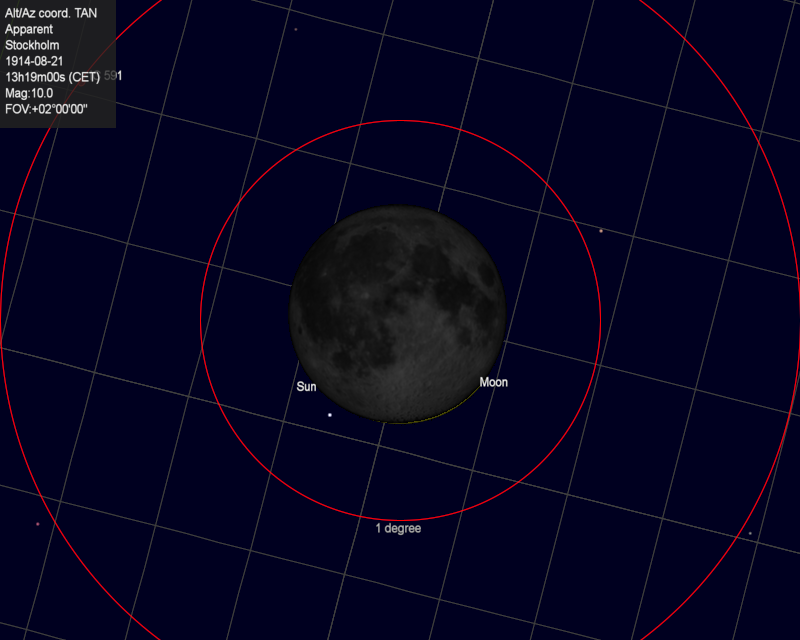
At 06:24 in the film, in Kungsträdgården north of Molin's fountain.
This telescope has too long focal length, over 1 meter, to be the one they are filming the eclipse with.
More something to visually watch the eclipse with.
Presumably they project the Sun onto a white disc so that many people can see the event at the same time. |
Complementary material from the 1914 solar eclipse from other places: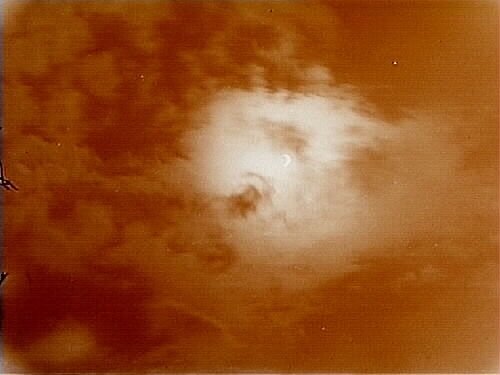 Credit:
Digitaltmuseum Örebro läns museum
Credit:
Digitaltmuseum Örebro läns museumSolförmörkelse. Örebro den 21 augusti 1914. Photographer: Lindskog, Samuel This photo is taken by the photgrapher Samuel Lindskog at Örebro in the middle of Sweden. 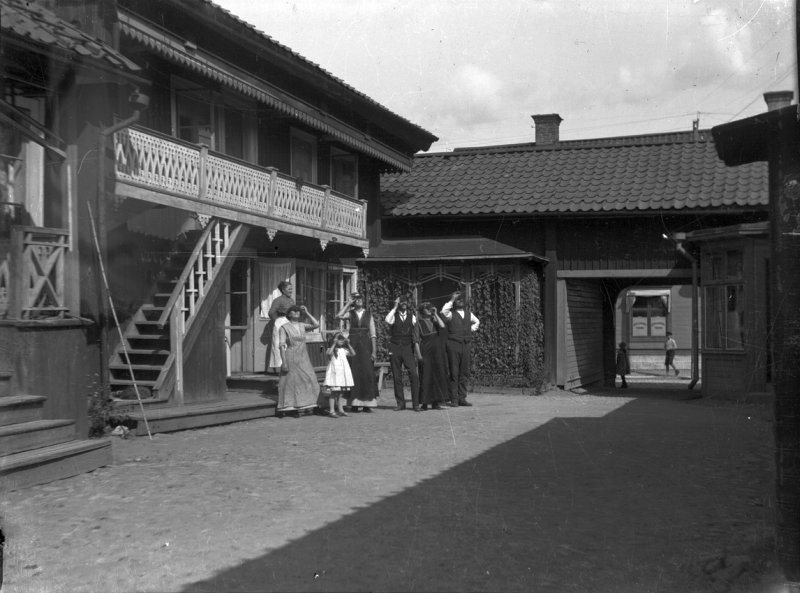 Credit:
Digitaltmuseum Örebro läns museum
Credit:
Digitaltmuseum Örebro läns museumBostadshus, hemmet på Kungsgatan 33, Lindesberg. Grupp sju personer framför huset, troligen solförmörkelsen den 21 augusti 1914. Från vänster Eva Sofia Pettersson (givarens farmor), Ester Pettersson, Kerstin Pettersson (givarens fastrar), övriga ej namngivna. Photographer: Unknown A photo of people looking at the solar eclipse, this is also from Örebro but I don't think they have any connection to each other.  Credit:
Digitaltmuseum Vänerborgs museum
Credit:
Digitaltmuseum Vänerborgs museumSolförmörkelse d. 21 aug 1914. Photographer: Hilding, Almén One more photo of the solar eclipse, a heavy reflection in a filter. It's the photographer Almén Hilding who took this photo, maybe somewhere i Vänersborg.  Credit:
Digitaltmuseum Upplandsmuseet
Credit:
Digitaltmuseum UpplandsmuseetSannolikt skolklass som tittar på solförmörkelse. Photographer: Ärnström, Josef A school class looking at solar eclipse, not sure if it's from 1914, but looks so. Even more info related to the solar eclipse 1914: |
|
More to know :
|
Other Swedish total solar eclipses during 20th century:During the 20th century we had four total solar eclipse, we had 1914, 1927, 1945 and 1954. |
|
| Go Back |